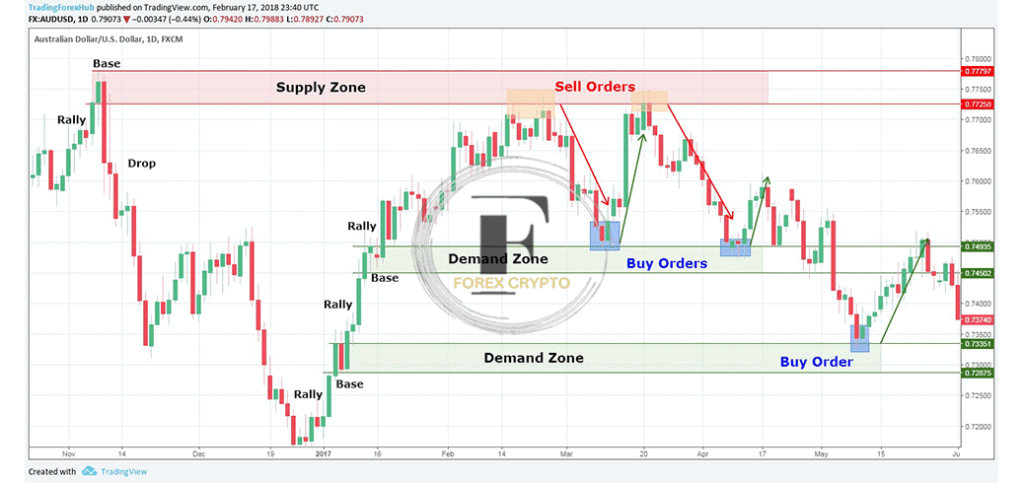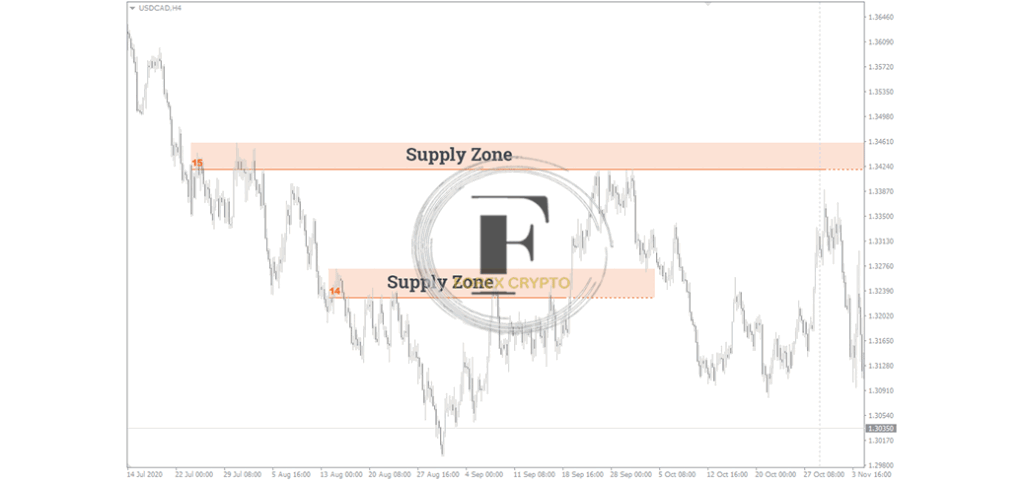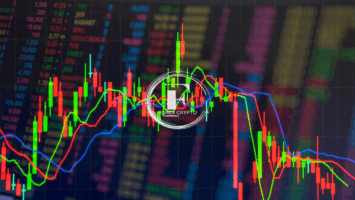By Forex Crypto
Jul 28, 2023
Harmonic Patterns: How to use them when trading

Article Contents
- Using Harmonic Patterns in Trading
- How do harmonic patterns work?
- How can we benefit from harmonic patterns?
- Harmonic trading patterns and their variations
- ABCD
- Gartley\sButterfly\sCrab\sShark
- When trading currencies, why employ harmonic patterns?
- Harmonic price indicators are available now; use them!
Harmonic Patterns: How to use them when trading
- Traders often employ chart patterns in technical analysis because they help them recognize trends and make forecasts. Specific geometric chart patterns, like the standard rectangle, are elementary and straightforward, while others may be rather complicated. Yet, all chart patterns may show whether a movement is reversing or continuing.
- An advanced chart analyst who can recognize and analyze trends of a particular sort and distinguish a legitimate pattern from a misrepresentation or false flag is the typical user of chart analysis techniques like harmonic patterns.
- We’ll go into the definition of a harmonic trading pattern, its potential applications, and the numerous forms it might take.
What are harmonic patterns?
- Harmonic patterns on a chart may be utilized to analyze market trends and anticipate market movements like other chart patterns. But harmonic trading patterns are unique because they are based on the Fibonacci series of mathematical ratios. For example, the sum of two numbers (0 and 1) yields the following number in the sequence (i.e., 1, 2, 3, 5, 8, 13).
- While doing market analysis, traders may use this to hunt for specific harmonic patterns denoted by ratios between chart pattern legs.
- This geometric pattern (sometimes called the golden ratio or number – 1.618 – owing to the ratio between each number in the sequence) is discovered as the structural basis of many things in nature, including tree branches, flowers, and the human body.
- As harmonic patterns are based on Fibonacci ratios, traders may use them to understand movements and how long a specific trend could endure. Using Fibonacci sequences in calculations throughout finance, analysis, and market charting can help to produce accurate predictions.
Why are harmonic patterns useful?
- Since they are predicated on the idea that prices tend to retrace their previous moves while moving in the opposite direction, Fibonacci retracements are often used as an analytical tool. In addition, harmonic price patterns may be used for the same purposes, including forecasting future asset price movements and spotting trend reversals.
- The foreign exchange market (FX) and other markets might benefit from incorporating harmonic patterns into trading strategies to pinpoint optimal entry and exit positions. Using indicators like a trader would use any other tool or strategy; a pattern may be constructed to generate a picture based on Fibonacci retracement, which can be either bullish or bearish harmonic, depending on the direction of the price movement. Market sentiment may then be boosted, and chances to do so might arise.
The different types of harmonic trading patterns
- Traders may use various harmonic patterns, each of which can shed light on a particular trend. However, since it is a complex analytical tool, traders must have some technical background to analyze the patterns and promptly make appropriate judgments.
- The feeling is represented by four or five contact points in all harmonic trading patterns, regardless of how basic or sophisticated the strategy is. Below, we’ll examine five such motifs and discuss the background and philosophy behind them.
ABCD
- This four-pointed, three-swing harmonic price pattern might indicate either a continuation or reversal of the prevailing trend.
- Changes in asset prices may be described as bullish or bearish, and retracements can be seen as corrections to recent highs or lows. The 38.2% (0.382), 50% (0.5), and 61.8% (0.618) Fibonacci retracement levels are used in ABCD patterns (0.618).
- Bearish and bullish markets may be traded using the ABCD harmonic pattern since the algorithm indicates distinct up- and downtrends in any stock, asset, or foreign currency. This motif works equally well for any period.
Gartley
- This harmonic pattern, which has five points of contact on a chart, was initially shown by HM Gartley in the 1930s. The bullish and bearish inversions of the Gartley chart pattern resemble the letters M and W, respectively. This chart is a Gartley harmonic pattern when the price swings (X to A, A to B, B to C, and C to D) coincide with Fibonacci levels.
- For many traders, the ‘X’ spot is where they’ll put a stop loss order, while the “C” spot will be where they cash out. This strategy provides trader discretion, yielding profitable buying and selling opportunities across all markets.
Butterfly
- The butterfly, whose five-point structure consists of four legs, was first found by Bryce Gilmore (X to A, A to B, B to C, and C to D). Unlike the Gartley, the Fibonacci levels in a butterfly harmonic pattern are aligned with distinct ratios. Point D extends beyond X. Hence, unlike other designs, the C-to-D leg continues to an additional 127% extension.
- At point “D,” a trader typically sells in a bearish market and purchases in a bullish market. At this juncture, prices turn around, allowing buyers and sellers to profit from previous extremes.
Crab
- The crab generates a picture similar to the butterfly harmonic patterns but with slightly altered ratios; this was discovered by Scott Carney and formed the correct foundation for a trading method. Even though the overall formation is a reversal pattern, the swing point in the extension leg is just 1.618%.
- Whenever a trader spots a harmonic crab pattern, it often heralds the end of one price trend and the beginning of another, whether the previous trend was bullish or bearish, short-term or long-term.
- Typically, a trade will be entered at point “D,” with a stop loss at point “X,” as with other harmonic patterns.
Shark
- The shark pattern, which can detect market reversals, was first discovered in 2011 and is based on a similar five-point graphic. The shark, however, has its distinct ratio levels and an extra point labeled ‘O,’ giving the pattern its distinctive shape. Because of this, O-to-X, X-to-A, A-to-B, and B-to-C are the symbols for the legs.
- Shark harmonic patterns enter the market at position C rather than D. As the pattern is invalidated if the price drops below ‘D,’ this is also a good spot for traders to set their stop loss. The take-profit spot is located midway between the B and C leg.
- From point “C,” a bullish shark harmonic pattern would indicate an upward price movement, while a bearish pattern would indicate a downward trend.
- Due to its complexity, this harmonic pattern is not advised for beginners in trading or technical analysis. However, short-term trading opportunities, in particular, might have obvious entry and exit points and optimal risk-reward ratios for the more experienced trader.
Why use harmonic patterns in forex trading?
- The above-described harmonic patterns may be used in any trading market, including stocks, assets, and futures; however, the forex market is especially well-suited to them because of the time-frame flexibility. For example, after 24 hours of continuous trading, historical data reveals harmonic patterns that repeat themselves throughout shorter time frames, from minutes to hours to days.
- To what extent harmonic patterns provide profits depends on the trader’s degree of expertise and ability to accurately identify the Fibonacci ratio levels for each pattern. Yet, when used properly, this analysis may correctly foretell the rapid reversal and movement of trends in the foreign exchange market.
Get started with harmonic price indicators today
- Are you prepared to use harmonic price indicators in your trading arsenal? With FXCM, the process is simple.
- Learn about the various harmonic trading patterns and determine how to include them in your trading strategy with the help of this handy reference.
- Do you have an optimistic or pessimistic outlook? Then, you may do business wherever you choose.
- Join FXCM and get complete access to the foreign exchange market. In addition, you may practice trading without risk with a demo account to improve harmonic patterns.
- Learn to recognize trends and identify potential trading opportunities that might provide high profits.






Comments (No)